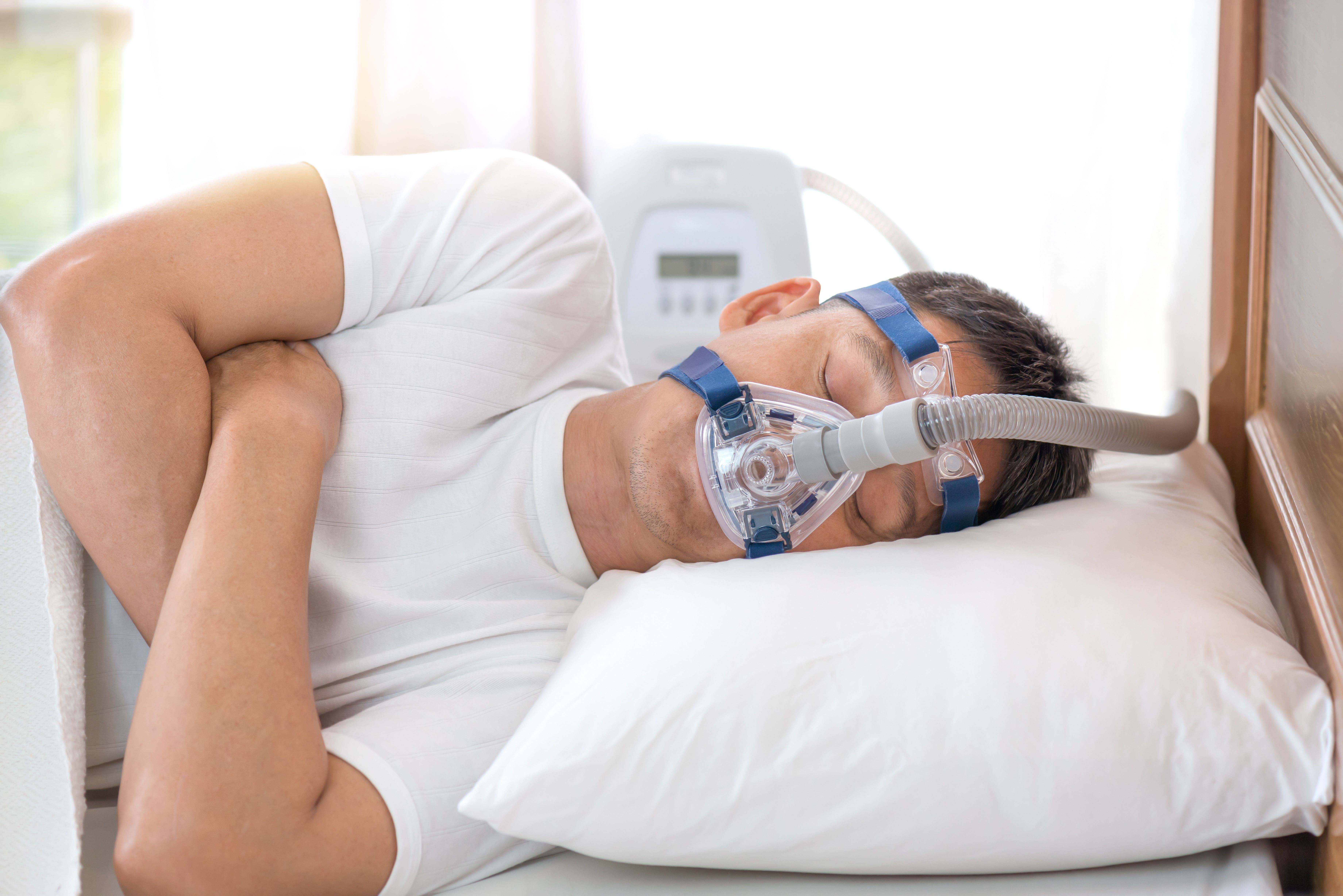News
Article
Electrical Stimulation May Improve Sleep Apnea, Daytime Sleepiness Better Than CPAP
Author(s):
More than 1 billion people suffer from sleep apnea, a condition often associated with snoring.
Transcutaneous electrical stimulation (TENS) can significantly improve severe obstructive sleep apnea (OSA), according to an article by investigators from King’s College London and Guy’s & St Thomas’ NHS Foundation Trust published in the journal eClinical Medicine. This could be a promising second-line therapy for patients who do not respond to continuous positive airway pressure (CPAP), according to the investigators.1
Image credit: sbw19 - stock.adobe.com

Worldwide, more than 1 billion people suffer from sleep apnea, a condition that causes someone to frequently stop breathing at night. Often associated with snoring, OSA worsens symptoms of daytime sleepiness and headache, and reduces attention.
TENS is a battery-operated machine that is commonly used for arthritis and labor. TENS titrates electrical currents, via electrodes that attach to the skin and can be adjusted based on skin sensation.1,2
CPAP is the current standard of care for sleep apnea. It is a mask that pumps air into the nose or mouth during sleep, but many patients struggle with long-term adherence. At 3 months after starting CPAP, 75% of patients adhere to treatment, whereas at 5 years, the rate of adherence plummets to 25%.
“Not all patients with OSA are able to use CPAP therapy, often because the mask can be uncomfortable and in severe cases can lead to sleep deprivation,” said Joerg Steier, professor of respiratory and sleep medicine, King’s College London, and consultant, Guy’s & St Thomas’ NHS Foundation Trust, in the press release.
Investigators conducted the single-center, open-label, randomized, controlled, phase 3 TESLA (NCT03160456) trial to evaluate the safety and efficacy of TENS compared with CPAP in 56 patients with OSA.2
The team hypothesized that TENS could reduce OSA severity, setting a primary outcome of reduced OSA severity at 3 months compared to baseline. Secondary outcomes were reduced sleepiness—as measured by the Epworth Sleepiness Scale (ESS)—improved daytime symptoms, treatment adherence, treatment comfort, and a 4% oxygen desaturation index (ODI).
The primary outcome was measured using the apnea-hypopnea-index (AHI)—a positive response was a reduction in AHI by 50%. Following intervention, 34.5% of patients improved AHI by 50% and only 14.8% of patients using CPAP improved the severity of OSA symptoms.
More patients in the TENS arm experienced a clinical improvement in daytime sleepiness. In addition, TENS reduced snoring by 27.6 minutes (p < 0.001), contributing to an 11.4% decrease in total time snoring during sleep (p < 0.001). Further, treatment adherence was significantly better with TENS compared to CPAP. Headache was the only minor adverse event associated with TENS.
“A TENS machine is non-invasive, has little side effects, and is cheap,” Steier concludes. “The TESLA trial shows us the potential of a new therapeutic option, transcutaneous electrical stimulation, and it will be interesting to see how the method can be used in clinical practice.”1
References
- TENS machine provides cheaper and non-invasive treatment for sleep apnoea. King’s College London. News Release. August 3, 2023. Accessed on August 7, 2023. https://www.eurekalert.org/news-releases/997493
- Ratneswaran D, Cheng M, Nasser E, et al. Domiciliary transcutaneous electrical stimulation in patients with obstructive sleep apnoea and limited adherence to continuous positive airway pressure therapy: a single-centre, open-label, randomised, controlled phase III trial. eClinical Medicine. August 3, 2023; DOI: 10.1016/j.eclinm.2023.102112





